+ Open data
Open data
- Basic information
Basic information
| Entry | Database: PDB / ID: 7pb4 | ||||||
|---|---|---|---|---|---|---|---|
| Title | Cenp-HIK 3-protein complex | ||||||
 Components Components |
| ||||||
 Keywords Keywords | CELL CYCLE / inner kinetochore | ||||||
| Function / homology |  Function and homology information Function and homology informationkinetochore organization / kinetochore binding / CENP-A containing chromatin assembly / sex differentiation / kinetochore assembly / inner kinetochore / mitotic sister chromatid segregation / Amplification of signal from unattached kinetochores via a MAD2 inhibitory signal / Deposition of new CENPA-containing nucleosomes at the centromere / Mitotic Prometaphase ...kinetochore organization / kinetochore binding / CENP-A containing chromatin assembly / sex differentiation / kinetochore assembly / inner kinetochore / mitotic sister chromatid segregation / Amplification of signal from unattached kinetochores via a MAD2 inhibitory signal / Deposition of new CENPA-containing nucleosomes at the centromere / Mitotic Prometaphase / EML4 and NUDC in mitotic spindle formation / Resolution of Sister Chromatid Cohesion / mitotic spindle organization / chromosome segregation / RHO GTPases Activate Formins / kinetochore / Separation of Sister Chromatids / chromosome / nuclear body / nucleolus / nucleoplasm / nucleus / cytosol Similarity search - Function | ||||||
| Biological species |  Homo sapiens (human) Homo sapiens (human) | ||||||
| Method |  X-RAY DIFFRACTION / X-RAY DIFFRACTION /  SYNCHROTRON / SYNCHROTRON /  MOLECULAR REPLACEMENT / Resolution: 2.49 Å MOLECULAR REPLACEMENT / Resolution: 2.49 Å | ||||||
 Authors Authors | Bellini, D. / Yatskevich, S. / Muir, W.K. / Barford, D. | ||||||
| Funding support |  United Kingdom, 1items United Kingdom, 1items
| ||||||
 Citation Citation |  Journal: Science / Year: 2022 Journal: Science / Year: 2022Title: Structure of the human inner kinetochore bound to a centromeric CENP-A nucleosome. Authors: Stanislau Yatskevich / Kyle W Muir / Dom Bellini / Ziguo Zhang / Jing Yang / Thomas Tischer / Masa Predin / Tom Dendooven / Stephen H McLaughlin / David Barford /  Abstract: Kinetochores assemble onto specialized centromeric CENP-A (centromere protein A) nucleosomes (CENP-A) to mediate attachments between chromosomes and the mitotic spindle. We describe cryo-electron ...Kinetochores assemble onto specialized centromeric CENP-A (centromere protein A) nucleosomes (CENP-A) to mediate attachments between chromosomes and the mitotic spindle. We describe cryo-electron microscopy structures of the human inner kinetochore constitutive centromere associated network (CCAN) complex bound to CENP-A reconstituted onto α-satellite DNA. CCAN forms edge-on contacts with CENP-A, and a linker DNA segment of the α-satellite repeat emerges from the fully wrapped end of the nucleosome to thread through the central CENP-LN channel that tightly grips the DNA. The CENP-TWSX histone-fold module further augments DNA binding and partially wraps the linker DNA in a manner reminiscent of canonical nucleosomes. Our study suggests that the topological entrapment of the linker DNA by CCAN provides a robust mechanism by which kinetochores withstand both pushing and pulling forces exerted by the mitotic spindle. | ||||||
| History |
|
- Structure visualization
Structure visualization
| Structure viewer | Molecule:  Molmil Molmil Jmol/JSmol Jmol/JSmol |
|---|
- Downloads & links
Downloads & links
- Download
Download
| PDBx/mmCIF format |  7pb4.cif.gz 7pb4.cif.gz | 155.5 KB | Display |  PDBx/mmCIF format PDBx/mmCIF format |
|---|---|---|---|---|
| PDB format |  pdb7pb4.ent.gz pdb7pb4.ent.gz | 120.8 KB | Display |  PDB format PDB format |
| PDBx/mmJSON format |  7pb4.json.gz 7pb4.json.gz | Tree view |  PDBx/mmJSON format PDBx/mmJSON format | |
| Others |  Other downloads Other downloads |
-Validation report
| Summary document |  7pb4_validation.pdf.gz 7pb4_validation.pdf.gz | 415.8 KB | Display |  wwPDB validaton report wwPDB validaton report |
|---|---|---|---|---|
| Full document |  7pb4_full_validation.pdf.gz 7pb4_full_validation.pdf.gz | 419.9 KB | Display | |
| Data in XML |  7pb4_validation.xml.gz 7pb4_validation.xml.gz | 9.2 KB | Display | |
| Data in CIF |  7pb4_validation.cif.gz 7pb4_validation.cif.gz | 12.5 KB | Display | |
| Arichive directory |  https://data.pdbj.org/pub/pdb/validation_reports/pb/7pb4 https://data.pdbj.org/pub/pdb/validation_reports/pb/7pb4 ftp://data.pdbj.org/pub/pdb/validation_reports/pb/7pb4 ftp://data.pdbj.org/pub/pdb/validation_reports/pb/7pb4 | HTTPS FTP |
-Related structure data
| Related structure data | 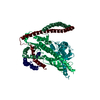 7pb8C 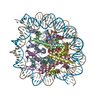 7piiC 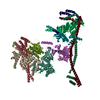 7pknC 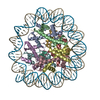 7r5rC 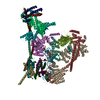 7r5sC 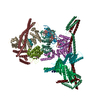 7r5vC 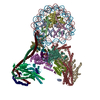 7ywxC 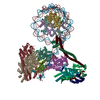 7yyhC  6ypcS S: Starting model for refinement C: citing same article ( |
|---|---|
| Similar structure data | Similarity search - Function & homology  F&H Search F&H Search |
- Links
Links
- Assembly
Assembly
| Deposited unit | 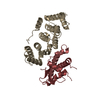
| ||||||||
|---|---|---|---|---|---|---|---|---|---|
| 1 |
| ||||||||
| Unit cell |
|
- Components
Components
| #1: Protein/peptide | Mass: 5726.729 Da / Num. of mol.: 1 Source method: isolated from a genetically manipulated source Source: (gene. exp.)  Homo sapiens (human) / Gene: CENPH, ICEN35 / Production host: Homo sapiens (human) / Gene: CENPH, ICEN35 / Production host:  |
|---|---|
| #2: Protein | Mass: 25832.582 Da / Num. of mol.: 1 Source method: isolated from a genetically manipulated source Source: (gene. exp.)  Homo sapiens (human) / Gene: CENPI, FSHPRH1, ICEN19, LRPR1 / Production host: Homo sapiens (human) / Gene: CENPI, FSHPRH1, ICEN19, LRPR1 / Production host:  |
| #3: Protein | Mass: 12496.531 Da / Num. of mol.: 1 Source method: isolated from a genetically manipulated source Source: (gene. exp.)  Homo sapiens (human) / Gene: CENPK, ICEN37, FKSG14 / Production host: Homo sapiens (human) / Gene: CENPK, ICEN37, FKSG14 / Production host:  |
-Experimental details
-Experiment
| Experiment | Method:  X-RAY DIFFRACTION / Number of used crystals: 1 X-RAY DIFFRACTION / Number of used crystals: 1 |
|---|
- Sample preparation
Sample preparation
| Crystal | Density Matthews: 2.51 Å3/Da / Density % sol: 51.02 % |
|---|---|
| Crystal grow | Temperature: 277 K / Method: vapor diffusion, sitting drop / Details: 10% PEG 8k, 100 mM imidazole pH 8 |
-Data collection
| Diffraction | Mean temperature: 100 K / Serial crystal experiment: N |
|---|---|
| Diffraction source | Source:  SYNCHROTRON / Site: SYNCHROTRON / Site:  Diamond Diamond  / Beamline: I24 / Wavelength: 0.9795 Å / Beamline: I24 / Wavelength: 0.9795 Å |
| Detector | Type: DECTRIS PILATUS 6M / Detector: PIXEL / Date: Jan 26, 2021 |
| Radiation | Protocol: SINGLE WAVELENGTH / Monochromatic (M) / Laue (L): M / Scattering type: x-ray |
| Radiation wavelength | Wavelength: 0.9795 Å / Relative weight: 1 |
| Reflection | Resolution: 2.49→53.5 Å / Num. obs: 11771 / % possible obs: 99.5 % / Redundancy: 3.7 % / CC1/2: 0.98 / Rmerge(I) obs: 0.13 / Net I/σ(I): 8.5 |
| Reflection shell | Resolution: 2.49→2.6 Å / Rmerge(I) obs: 0.7 / Num. unique obs: 11771 / CC1/2: 0.3 |
- Processing
Processing
| Software |
| ||||||||||||||||||||||||||||||||||||||||
|---|---|---|---|---|---|---|---|---|---|---|---|---|---|---|---|---|---|---|---|---|---|---|---|---|---|---|---|---|---|---|---|---|---|---|---|---|---|---|---|---|---|
| Refinement | Method to determine structure:  MOLECULAR REPLACEMENT MOLECULAR REPLACEMENTStarting model: 6YPC Resolution: 2.49→47.37 Å / SU ML: 0.38 / Cross valid method: THROUGHOUT / σ(F): 1.34 / Phase error: 31.52 / Stereochemistry target values: ML
| ||||||||||||||||||||||||||||||||||||||||
| Solvent computation | Shrinkage radii: 0.9 Å / VDW probe radii: 1.11 Å / Solvent model: FLAT BULK SOLVENT MODEL | ||||||||||||||||||||||||||||||||||||||||
| Displacement parameters | Biso max: 143.83 Å2 / Biso mean: 50.5043 Å2 / Biso min: 15.03 Å2 | ||||||||||||||||||||||||||||||||||||||||
| Refinement step | Cycle: final / Resolution: 2.49→47.37 Å
| ||||||||||||||||||||||||||||||||||||||||
| LS refinement shell | Refine-ID: X-RAY DIFFRACTION / Rfactor Rfree error: 0 / Total num. of bins used: 4
| ||||||||||||||||||||||||||||||||||||||||
| Refinement TLS params. | Method: refined / Origin x: -19.2463 Å / Origin y: -6.7088 Å / Origin z: 21.7924 Å
| ||||||||||||||||||||||||||||||||||||||||
| Refinement TLS group |
|
 Movie
Movie Controller
Controller










 PDBj
PDBj




